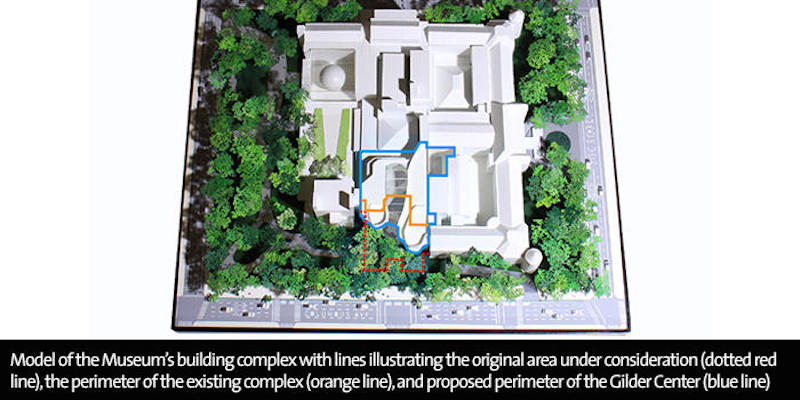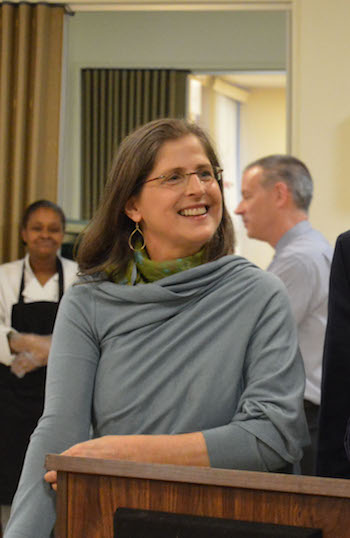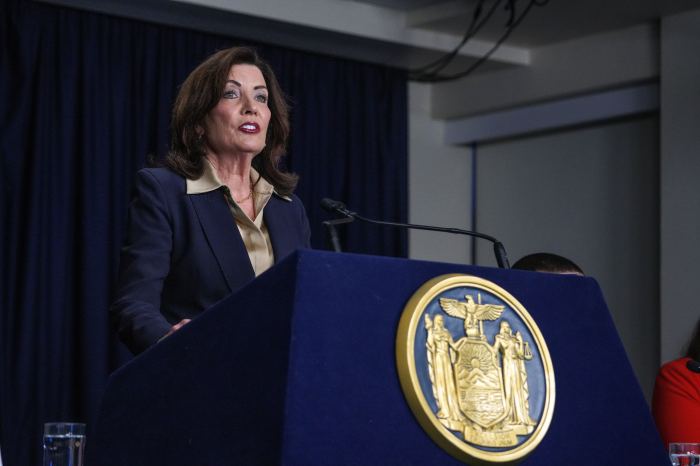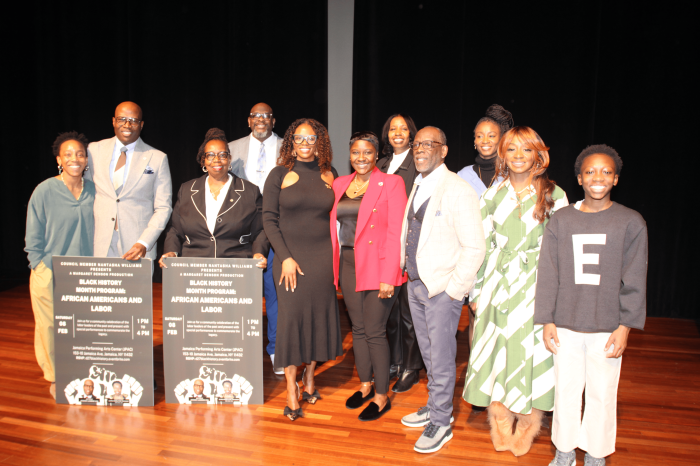
BY JACKSON CHEN | As the American Museum of Natural History’s expansion plan continues through its public review process, critics of the project have focused on the significant government resources that have already been allocated for its completion.
According to Roberto Lebron, the museum’s senior director of communications, the new Richard Gilder Center for Science, Education and Innovation has, to date, received commitments for $44.3 million from the city and $6 million from the state. The project, which is expected to cost $325 million in total, has drawn fire because 20 percent of its footprint will encroach on the Theodore Roosevelt Park, which surrounds the museum between Central Park West and Columbus Avenue and 77th and 81st Streets.
Opponents have charged that the city and state, in already providing millions of dollars in support, have sided with the museum rather than the community being impacted by the expansion.
“There’s not much transparency and very little to no public discourse,” Cary Goodman, a persistent critic of the museum’s project, said of the public funding. “You certainly can’t see it from a regular perspective of a citizen.”
But the museum’s Lebron explained that roughly two-thirds of the $325 million price tag is expected to come from private donors. The project, which he said has raised about half of its target budget, received $50 million from Richard Gilder, for whom the expansion is named and who heads the investment firm Gilder Gagnon Howe & Co.
At public hearings, the city’s contribution of more than $40 million to date — with millions more expected — is often shouted out in public meetings as neighboring residents complain that community input was not invited earlier in the planning.
Seth Kaufman, the secretary treasurer of the park advocacy group Alliance to Protect Theodore Roosevelt Park, said the city shouldn’t have given money for a project that was not yet clearly defined. Conceptual plans were only released this past November while city funding dates back several years, he noted. The community had largely been left in the dark about what the final project would look like, Kaufman charged.
“Politicians don’t go to the community first and say there’s this plan,” Kaufman said. “[They] don’t go to the community and say this is what the museum is planning, I want your input and thoughts.’”
To the project’s biggest critics, elected officials share the museum’s assumption that the Gilder Center is a done deal.
Based on the museum’s current estimates of cost, public funding for the project will eventually total approximately $108 million or the remaining third of the estimated $325 million cost, which suggests that $57.7 million would still be forthcoming from the city and state to fund the Gilder Center.
According to a breakdown provided by City Councilmember Helen Rosenthal’s office, city funding for the Gilder Center began in fiscal year 2012, when former Mayor Michael Bloomberg’s administration contributed $2 million, while then-Manhattan Borough President Scott Stringer, now the city comptroller, kicked in $500,000.
The following year, the City Council allocated $2 million of its capital budget for the Gilder Center expansion, and in fiscal year 2014, the Council contributed another $2.5 million from its capital budget, while the Bloomberg administration added on another $8 million for the project.
No city contributions were made in fiscal year 2015, but in the current fiscal year, ending on June 30, Borough President Gale Brewer donated $500,000, the de Blasio administration gave $12 million, and the Council put up $16.8 million.
Much of the recent public anger focused on city funding of the project has been directed at Rosenthal, since the museum falls within District 6, which she represents.
DeAnna Rieber, the president of the West 75th Street Block Association, said she is not opposed outright to the museum’s expansion, but is concerned that Rosenthal supported it ahead of the community’s approval.
“This was money, in my mind, that should’ve been approved by the constituents,” Rieber said. “The impact on constituents should’ve been weighed very intensely before the money was allocated and I’m just not sure that was done.”

Criticism directed at Rosenthal, however, overlooks the fact that more than a third of the total city funding to date — or $15 million — was committed before she took office in January 2014. And in the Council’s $16.8 million allocation in the current fiscal year, only $50,000 came out of the $5 million in capital funds Rosenthal had at her discretion. The remaining $16.75 million was a Council-wide distribution supported as well by Councilmembers Dan Garodnick, who represents the East Side, and Jimmy Van Bramer, the Queens majority leader who chairs the Committee on Cultural Affairs, as well as by the Manhattan delegation as a whole.
Rosenthal is not completely surprised at the criticism she’s heard, noting that it only moved squarely into the public eye with the release of the conceptual design in November.
In the budget for the fiscal year beginning July 1, another $250,000 is expected from Brewer’s office.
Rosenthal estimated that going forward, the museum could expect another $30 million in city funding for the Gilder Center project, which would bring its total contribution to about $75 million. That would result in a total state and city investment in the expansion of roughly $81 million, about 25 percent below the museum estimate that public funding could support up to a third of the $325 million cost.
Rosenthal contends that city support for its cultural institutions is more than justified by the benefits they deliver overall. The Gilder Center, she said, is a valuable way to expand the city’s science research and learning opportunities.
“The American Museum of Natural History is a gem,” Rosenthal said. “And there’s an opportunity to grow that space that would be available for the natural sciences — who wouldn’t jump on that?”
The project must work through several rounds of public review, the first of which, on April 6, lasted several hours with widespread opposition from local residents. The museum is currently at work on a draft environmental impact statement, which will also be subject to its own public review by the Department of Parks and Recreation. The project will eventually go before both Community Board 7 and the city’s Landmarks Preservation Commission.
Editor’s note: An earlier version of this story misstated the money going from the city to the Gilder Center project in the fiscal year beginning July 1 and overstated the expected city contribution to the expansion overall by about $13 million, or $88 million versus about $75 million.




































